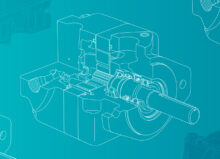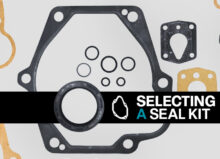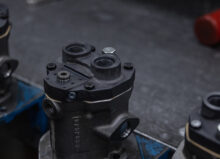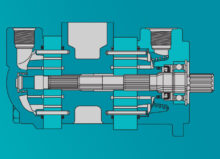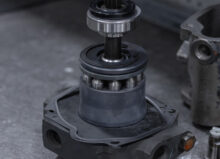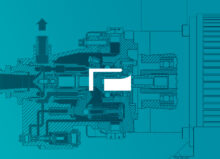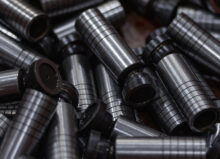Troubleshooting Noise in Hydraulic Systems

While some noise in a hydraulic system is normal, unusual sounds are often early warning signs of underlying issues, such as cavitation, aeration, misalignments, mechanical wear, fluid contamination, and other issues that can lead to more serious complications, including total system failures, if left unchecked.
In this blog, we’ll help you identify noise by issue, provide troubleshooting steps, and discuss when it’s best to schedule a repair with a professional.
Cavitation
Cavitation is usually caused by air bubbles forming and collapsing due to low-pressure areas, excessive fluid velocity, or insufficient fluid levels. If there is cavitation, you’ll hear a sharp, crackling noise that sounds like gravel or stones, which is the sound the air bubbles make when they implode.
Troubleshooting
- Check fluid levels. If they are low, add more fluid into the reservoir, which will help prevent air suction.
- Inspect pump inlets and clear any potential restrictions, which will reduce fluid velocity.
- Verify that the fluid temperature is within operational limits.
- Evaluate and adjust speed and pressure settings to eliminate low-pressure zones.
- Inspect and replace filters when needed to prevent contamination.
Aeration
Leaks, loose connections, and worn seals can draw external air into the system, causing aeration. With this issue, you’ll hear whining or hissing, which is the sound of air mixing with the hydraulic fluid.
Troubleshooting
- Inspect all hose connections and fittings. Tighten any loose connections and replace any worn connections.
- Check the fluid level and top it up to fully submerge the pump intake.
- Examine and replace any worn or damaged seals.
- Look for cracks and other physical damage in the suction line.
- Ensure the reservoir is properly vented.
Worn, Loose, Misaligned, or Poorly Maintained Components
Pumps, valves, seals, bearings, and hoses, are some of the most high-wear components in a hydraulic system, while couplings, shafts, and pipes can easily become misaligned due to improper installation or external forces.
Misalignments and worn/loose components will typically cause grinding, rattling, or squealing noises. If you’re mostly hearing rattling, that’s usually a sign of loose components.
Troubleshooting
The best way to prevent this issue from happening is to perform regular inspections to identify worn seals or misaligned or loose components and then replace, realign, or tighten them.
If you don’t regularly inspect your system, check the seals and bearings first. Then, check fittings and connections and tighten any loose ones. If that doesn’t work, pumps/motors, couplings, shafts, pipes, or hoses for potential misalignments and realign them.

Pressure Spikes
Pressure spikes are often caused by blockages, sudden changes in load, or problems with the pump controls. They typically sound like sharp, popping sounds or a series of loud bangs.
Troubleshooting
- Check for blockages in the system that are restricting flow and clear them.
- Inspect the relief valves and ensure they’re not stuck or improperly set.
- Check and fix the pump settings if needed.
- Monitor system operation to identify abnormalities and adjust operational parameters.
- Check for worn valves, seals and gaskets, clogged filters, or leaks/breaks in hoses and connectors, which can cause pressure spikes. Replace any worn components or dirty filters and tighten any loose connections.
Still Having Issues? Contact Panagon Systems
If you’ve tried troubleshooting and are still experiencing unusual sounds, turn to Panagon Systems. Founded over 25 years ago, we specialize in manufacturing, repairing, and rebuilding Vickers and Rexroth hydraulic pumps and motors. Please contact us today to speak with one of our experts.




